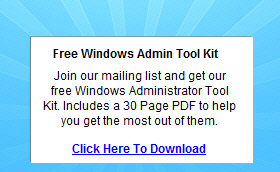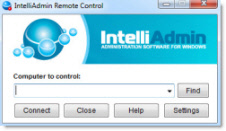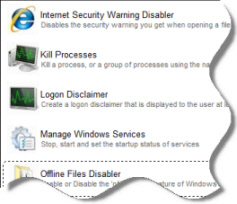Exchange 2003 to 2010 migration
Hi,
I am in the process of upgrading from Exchange 2003 to 2010 and may have hit a snag that I haven't found an answer for.
I have been following the steps outlined in this article
http://www.petenetlive.com/KB/Article/0000234.htm and have made it to step 5, the "Do Nothing" stage. So far I haven't had any real issues and everything seems to be working correctly.
After I had done nothing for a few days and thinking that everything should now be on the new server I decided to shutdown the old server for a few days to verify that nothing was overlooked (to see if anything breaks). I didn't expect anyone to notice.
After about half a day I had a few users with an error in outlook (2003) "Task 'Microsoft Exchange Server' reported error (0x8004010F) : 'The operation failed. An object could not be found.'".
Would this be expected as I have not officially removed the old server? All of my users are correctly pointing to the new server.
Now I'm worried that I have an issue and shouldn't progress to Step 6 - Decommission and remove Exchange 2003.
Also, just in case it is related, I had a look at the next step and all of my public folders are listing as In Sync but my Schedule+ Free Busy is listing Local Modified on the new ex2010 server. I haven't found a thread that satisfactorily explains what
to do to correct this (if it is actually an issue)
Any guidance is gratefully received
Ian
May 1st, 2012 1:56am
Part of process is to shut down existing legacy server and make sure all working before removing it completely. So that being said you seems to be okay so far. Before you remove the legacy mail
server you should stop all services and make sure everything is working if not, simply turn on the services back and try to find out what you have missed and move on same process until there are no more issues.
Good Luck with migration
ocd
Upgrade to Exchange 2010
http://technet.microsoft.com/en-us/library/aa998604(EXCHG.140).aspx
Migration Notes
http://smtp25.blogspot.com/search?q=migration+Exchange+2003
Also some more useful links
E2010 Mailbox Server Role Requirements Calculator
http://msexchangeteam.com/files/12/attachments/entry453145.aspx
Exchange Server 2010 Cost Savings Calculator
http://www.microsoft.com/exchange/2010/en/us/Exchange-Calculator.aspx
You most likely heard about DAS ( direct attached storage) and maybe you are looking for offloading your exchange servers from any type of SAN backend, the process we will talk about bringing new exchange servers and decommission old ones will be pretty much
same.
Upgrade to Exchange 2010
http://technet.microsoft.com/en-us/library/aa998604.aspx
Upgrade from Exchange 2003 Mailbox
http://technet.microsoft.com/en-us/library/dd638113.aspx
Deployment assistance ( upgrade from Exchange 2003)
http://technet.microsoft.com/en-us/exdeploy2010/default.aspx#Home
Oz Casey, Dedeal MCITP (EMA), MCITP (EA), MCITP (SA)
Visit smtp25.blogspot.com Visit Telnet25.wordpress.com
This posting is provided AS-IS with no warranties or guarantees and confers no rights.
Free Windows Admin Tool Kit Click here and download it now
May 1st, 2012 2:00pm
Thanks everyone,
I'm going through the different guides listed and working out what is missed in each to make sure i have done everything.
I'll let you know how i go.
Ian
May 1st, 2012 7:49pm
Hi,
I have been going through your guide and compairing the steps to the ones in the petenetlive guide, verifying that each step is done and what results i see is correct.
You where correct that my guide doesn't have the steps for removing the public folders database or moving the public folder hierachy.
I am at the stage of "Move All Replicas" (from the 2003 server) for the public folder and it says that i have to wait for everything to be moved before i can delete the database or go to the next step. It says this may take several hours or even over a day
for large public folders (ours is not very big).
Looking in the Public Folder Instances folder in the Ex2003 ESM i could see the folders slowly disapearing as they where moved. When i went home last night there was only 1 folder left.
Name, Folder, Size (kb), Folder Path
exchangeV1, exchangeV1, 361, schema-root\microsoft\exchangeV1
That folder is still there and i'm wondering if there is an issue.
Any sugestions or recomendations on how to determin if there is an issue or how to move this last folder?
Thanks
Ian
Free Windows Admin Tool Kit Click here and download it now
May 2nd, 2012 5:47pm
Hi Ian,
You can delete the folder schema-root and its subfolders. They are system folders for Exchange 2003 that ou will never need on Exchange 2010.
The same goes for OWAScratchPad{GUID} and StoreEvents{GUID}Martina Miskovic
May 2nd, 2012 6:00pm
Going back to the original question - the error code you have posted is "Cannot Find". THe most common cause of that is an issue with the OAB. Outlook 2003 uses public folders for OAB.
Therefore check that on the mailbox database on the new server you have configured a public folder store, it is the correct one and there is also an OAB set. Ensure that the OAB is set to both web and public folder distribution and that the correct settings
are in place.
When it comes to public folder content, ignore the sync status. The only thing that matters is item count. That means comparing the item count in ESM with the output of get-publicfolderstatistics.
Finally I don't subscribe to the "shutdown the old server and see what breaks" method, as things will break. Exchange will expect the server to be there. If you go through the guides correctly, removing Exchange 2003 is pretty straight forward. The only
thing that will usually cause you a problem is other things (printers, copiers, scripts) using the Exchange 2003 server for sending email.
Move All Replicas is fine to run and you will have to wait. I wouldn't bother trying to delete system folders to speed things up, just be patient. A day, if you are lucky. I don't tend to worry until nothing has happened for a week. (no I am not kidding).
Simon. Simon Butler, Exchange MVP
Blog |
Exchange Resources | In the UK?
Hire Me.
Free Windows Admin Tool Kit Click here and download it now
May 2nd, 2012 6:27pm
Thanks,
Just to verify before i do something stupid. Googling how to delete the schema-root (and the other folders that you mentioned) it looks like i should do it in the exchange 2010 Public Folder Management Console.
Can you confirm that is correct?
Also, when i look in that tool for the schema-root it has two sub folders. One named Default and one named microsoft which has a sub folder of exchangeV1. am i correct that i only need to remove the microsoft/exchangeV1 branch?
Thanks again
Ian
Hi,
It doesn't matter if you delete the schema-root and all it subfolder (including microsoft and ExchangeV1) in System Manager or Exchange Public Folder Console. The deletion will be replicated anyway, but I ususally use System Manager in Exchange 2003.
Did you check your settings on the databases?
Get-MailboxDatabase | ft Name,OfflineAddressBook,PublicFolderDatabaseMartina Miskovic
May 2nd, 2012 11:27pm
Hi,
So, in the 2003 System Manager i just go to the public folders and delete the top level schema-root (and the other two you mentioned)? Schema-root isn't used in any way on the new server? (just don't want to delete something i shouldn't)
Correct!
Yes the settings on the databases looks correct.
Do the users still get 0x8004010F?
Martina Miskovic
Free Windows Admin Tool Kit Click here and download it now
May 2nd, 2012 11:57pm
I haven't tried shutting down the old server again.
I'll delete the 3 folders that you mentioned and then try a shutdown in the morning.
Thanks
Ian
May 3rd, 2012 12:02am
Hello,
Any update?
Best Regards,
Lisa
Free Windows Admin Tool Kit Click here and download it now
May 7th, 2012 3:40am
Hi everyone,
I had two faulse starts in the testing as i found two seperate places where our previous programmers had hard coded the mail server name into one of our in-house systems rather than use the variable in the config file. So i have (shutdown, found an
issue, restarted, fixed legacy program issue) x 2.
Have been down for a day now with no complaints and no
(0x8004010F) errors. Tomorrow (today is going to be busy busy) i'll perform some general operations (create / delete users/groups etc) and make sure the changes are reflected everywhere it's supposed to be. Then i'll wait a few more days
just to be sure and then i'll start on the uninstall of EX2003..
Thanks again for all your help and keep your eyes open for a new thread on EX2003 uninstall issues... ;-)
Ian
May 7th, 2012 4:31pm


